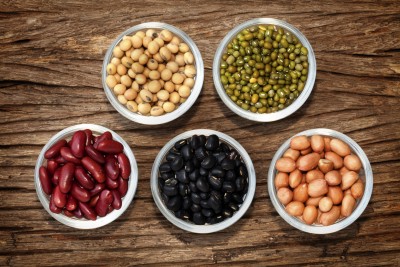Carbohydrates, sadly, have a bad reputation. Many of the clients I counsel admit to limiting or avoiding carbohydrates to promote weight loss. Does mean are all carbohydrates really bad? The answer is no. Carbohydrate dense food sources provide us with energy, vitamins, minerals, fiber and more. They are an important part of a healthy well balanced diet. But, not all carbohydrates are created equal. They key with carbohydrate consumption is learning which options are the most nutrient dense and how to consume them as a part of a balanced diet. The average American diet is primarily carbohydrates and unfortunately these carbohydrates are often highly refined and processed or in the form of added sugars and refined grains. Refined carbohydrates and excess sugar intake has been linked to an increased risk of obesity, diabetes and other diseases. So, are you curious which types of carbohydrates are healthy? The answer is quite simple. Carbohydrates in the form of whole foods are more nutrient dense. A high fiber diet rich in whole grains, beans, fruits and vegetables, all of which contain carbohydrates has been linked to the prevention of many diseases. Balance that out with lean proteins and healthy fats and you have a healthy diet. Here are eight carbohydrates that are nutrient dense whole food worth including in your diet.
1. Legumes (beans, peas and lentils)– Legumes are not only a carbohydrate but are also a great source of plant protein and soluble fiber. The soluble fiber and protein in the legumes helps stabilize blood sugar and helps us stay full longer. On top of the great health benefits of legumes, they are also inexpensive and are extremely versatile. Cooking dried legumes is the most inexpensive and healthy way to buy and prepare them. However, if you are in a crunch for time, canned beans can be substituted. Draining and rinsing canned legumes can remove close to 50% of the sodium added in packaging. Try adding legumes to salads, soups, or mashing them with other vegetables and seasonings to make veggie burgers.
2. Oats– There are many varieties of oats. The less processed they are the better. Soluble fiber in oats helps in slowing down the absorption of glucose from the food that we eat, preventing a spike in blood sugar. Try cooking your own steel cut or old fashioned oats with fruit, nuts, and cinnamon instead of using the sugar sweetened instant varieties. Oats go beyond oatmeal as well. Add oats to your favorite smoothie recipe to thicken it or add them to ground meats for meatloaf or burgers for a different texture.
3. Sweet potatoes- Sweet potatoes are rich in dietary fiber as well as many other nutrients such as vitamin A, C, manganese, potassium and B vitamins. Roast them whole then remove the skin and give them a quick mash—just add salt and pepper. You can add them to soups, stews or roast them with other root vegetables and try keeping the skin on, its tasty and nutritious.
4. Potatoes (Russet, white, or red)- Regular potatoes get a bad rap and they shouldn’t. They are a vegetable too! They are a good source of fiber and are rich in vitamin B and C, as well as potassium and iron. They actually have more potassium than a banana. Keep the skin on for extra nutrients and avoid frying them or drowning them in cream and butter.
5. Brown or Wild Rice- Brown and wild rice varieties helps stabilize blood sugar levels and are high in fiber, manganese and selenium. Rice helps us feel full and regulates bowel function. Adding a 1/2 cup of brown or wild rice to your meals instead of white rice provides you with an additional 1.5 g of fiber, and additional vitamins and minerals for the same amount of carbohydrate.
6. Winter Squash– Winter squashes which include butternut squash, pumpkins, spaghetti squash, and acorn squash to name a few, are starchy, delicious vegetables that are high in potassium, beta-carotene and vitamin B6. Serve spaghetti squash as a healthier alternative to pasta by cutting the squash in half, lengthwise and cooking, cut side down, on a lightly greased baking sheet at 350 degrees for 30 minutes and scooping insides out with a fork and serving with your favorite pasta sauce.
7. Millet– Millet is not just for the birds! Millet is a small, round, gluten free grain that can be red, grey, yellow, or white in color and can be cooked in almost any recipe that calls for grains, rice, or flour including pancakes, cookies, soup, or polenta. Millet is a good source of protein, copper, magnesium, manganese, and phosphorus making it heart healthy and good for maintaining healthy blood sugar.
8. Quinoa– By now I am sure you have heard of quinoa. It has gained popularity in recent years as a healthy, high protein grain. It’s high protein and fiber content helps keep you satiated and maintain your blood sugar level. It can be eaten with your favorite fruits or vegetables as a cold grain salad, as a side dish, or mixed with beans and vegetables as a binder for delicious veggie burgers.
By: Katie Cavuto, MS, RD

